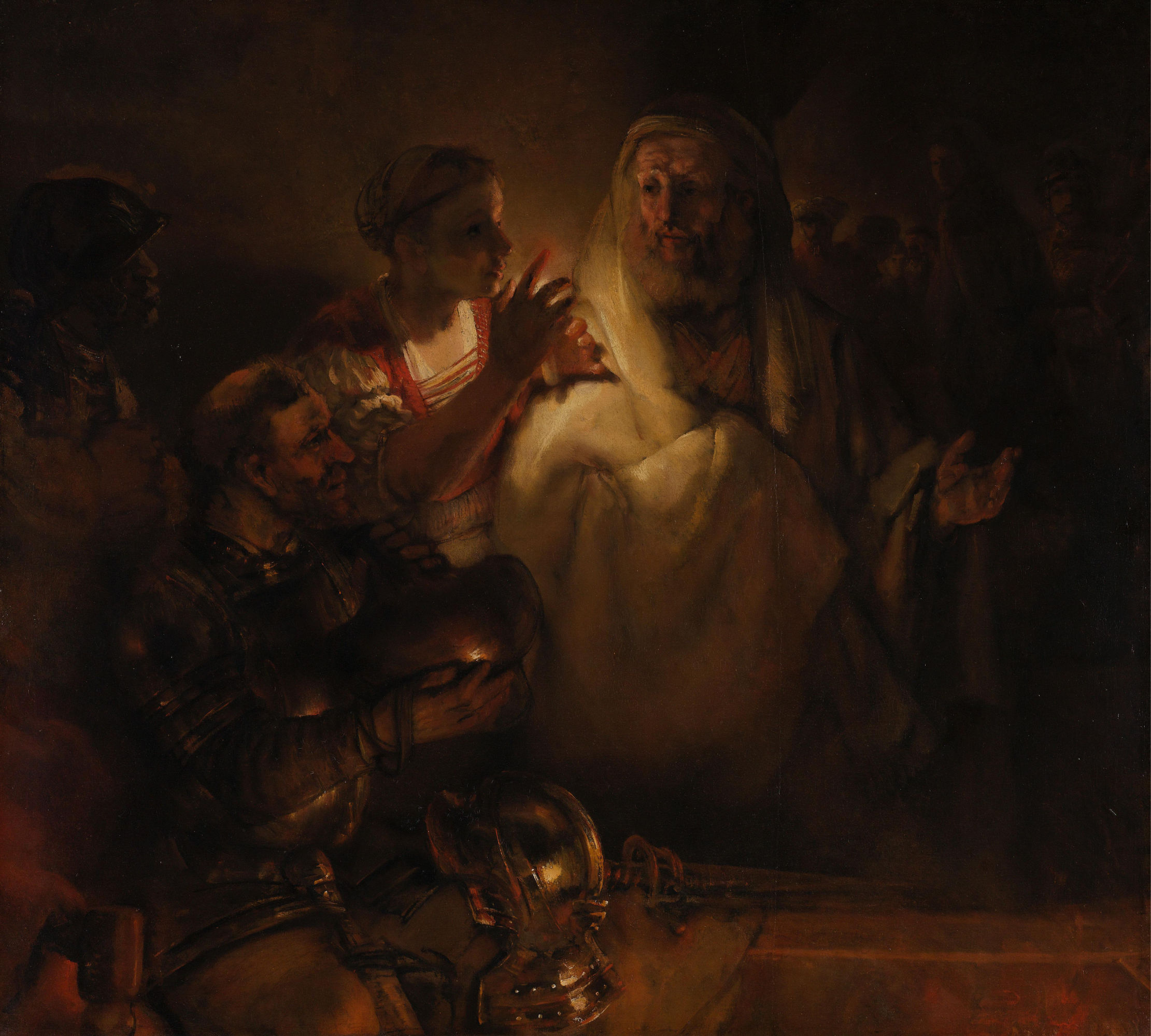Art in Scripture: Peter’s Denial and Restorationಮಾದರಿ


The Denial of St. Peter, 1660
REMBRANDT VAN RIJN
The Denial of St Peter, 1660, Oil on canvas, 54 x 169 cm, Rijksmuseum, Amsterdam; Purchased with the support of the Vereniging Rembrandt, Rijksmuseum, Amsterdam
Opening Prayer:
O LORD, You command us to be the light of the world, as Christ taught when He walked the earth. Grant us the courage to see your commandments through—to dwell always in light rather than concealing ourselves in darkness.
As we spend a few final moments this week reflecting on this image of Peter’s denial, may we connect with the love of Jesus. May we remember the love You offer to us unconditionally, and may we be willing to offer unconditional love to others in return. As You forgive our failures, may we forgive others on our path through life.
We thank You for Your everlasting love, and for the light that drives away all darkness. Be with us as we contemplate what it is to fail deeply, to fear, and then to return to You for restoration and hope that transcends all things.
Thoughts for Reflection:
Rembrandt’s choice of color in his painting, The Denial of St Peter, tells a story in itself. The intentionally selected hues—so dark the viewer can scarcely make out the entire scene—represent the literal and proverbial darkness of the moment they capture. Not only do the colors lend themselves to the realism of the nighttime courtyard scene, but they also communicate the dark moment Peter finds himself in and provide ominous foreshadowing of the events to come: Christ’s torture, humiliation, crucifixion, and death on the cross.
In The Visual Commentary Of Scripture, commentator Clemena Antonova describes the scene: “Peter is being approached by a servant-girl, holding a candlestick. The light of the candlestick illuminates Peter’s face and his lips, which are just beginning to form a denial. Peter has already denied knowing Christ twice—in Luke’s account, this is once to the servant-girl (vv.56–57, RSV) and later to one of the men in the courtyard (v.58, RSV). Although Rembrandt includes the servant-girl, the artist clearly intended to show Peter’s third renunciation of Jesus (again to a male accuser) (vv.59–60, RSV). At this moment, Peter remembers the Lord’s prediction at the Last Supper only a few hours earlier: "'Before the cock crows today, you will deny me three times’ (v.61, RSV).”
In darkness, fear flourishes. Without a guiding light, the dark gives us a place to hide. It’s easy to consider that a fearful Peter might have felt somewhat protected by nightfall, even in the High Priest’s courtyard. Yet in the painting, we see the servant girl holding up a candle to get a better look at him. Rembrandt’s depiction imagines that she shone a light on Peter’s face in the very moment when he hoped to go unrecognized.
As we meditate on God’s everlasting love, may we humbly ask Him to remove all fears and obstacles that block us from sharing His light with the world. Jesus paid the ultimate price to bring incomparable light into a world of darkness. His sacrifice guarantees that our failures can be forgiven, and His enduring love transcends our darkest moments.
The selected passages below invite you to focus on the holy light that overcomes all darkness. May we remember that through Christ, God has equipped us with this light. In Jesus’ name, may we carry that light faithfully through the days, weeks, months, and years.
To view this content in a browser (with the ability to inspect artwork in greater detail) access the full version at: Art In Scripture | Peter’s Denial and Restoration
ಈ ಯೋಜನೆಯ ಬಗ್ಗೆ

This devotional reading plan follows the emotional arc of Peter’s denial, grief, and redemption, illuminated by the power of Scripture and the beauty of sacred art. Each day offers a contemplative space to explore themes of human weakness, divine mercy, and the unshakable love of Christ. Through visual and biblical storytelling, readers are invited to consider their own stories of failure and hope, and to rediscover the grace that restores. It is an invitation to encounter the tenderness of Christ and the transforming power of His forgiveness.
More









